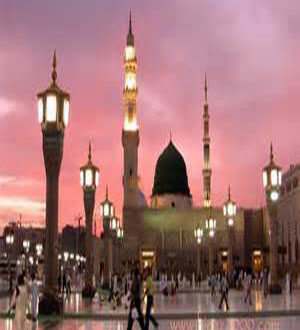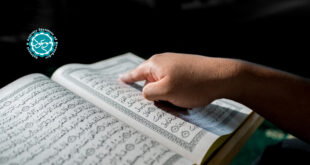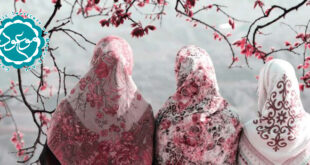The Green Dome
The Mamluk sultans to whom Qa’itbay belonged were followed by the Ottomans who took control of the Arabian Peninsula, especially the Hijaz with its two holy cities of Makkah and al-Madinah. Their domain extended to Palestine, then a province of al-Sham (Syria) encompassing present-day Lebanon and Jordan. The Ottomans administered the Hijaz through their governors (the sharifs) from 1517 until the end of the Fist World War (1918), when the Ottoman Empire disintegrated and British puppets took control of the region effectively falling into the hands of the British.
The Ottoman Sultans had great reverence for the stature and moral preeminence of the noble Messenger (pbuh) as is required of any good Muslim. They approached al-Masjid al-Nabawi, especially the Prophet’s (pbuh) tomb with the utmost respect. Even while undertaking expansion work in the masjid, they did it with great respect and care always cognizant of the fact that the last Messenger of Allah (pbuh) is buried there and nothing should be done that would appear even remotely indicative of any disrespect to him.
It was the Ottoman Sultan Mahmud II who in 1818 built the green dome that covers the Prophet’s (pbuh) grave. It was built on top of the existing dome that was built by Qa’itbay in 1481. The green painted dome distinguishes the Prophet’s (pbuh) tomb from other domes that are silver in colour. The green paint was first applied to the Prophet’s (pbuh) dome in 1837. It has remained this way ever since to distinguish it from the multiple silver domes that can be seen atop al-Masjid al-Nabawi.
In 2007, the Saudis tried to paint the dome silver to make it look like all the other domes. The people of Madinah suspected this to be a sinister ploy on the part of the Saudi regime and launched an unprecedented protest against the municipality in Madinah, forcing it to repaint the dome to its original green color. One is constrained to ask: why did the municipality feel the need to paint the distinctive green dome to silver color so that it would become indistinguishable from other domes? Critics of the Saudi regime that have followed and exposed the regime’s wholesale destruction of the sacred sites suspected that there was a sinister motive behind it.
Unlike the Saudis, the Ottomans showed great respect to al-Masjid al-Nabawi and the Prophet’s (pbuh) tomb that is located in the southeast corner of the masjid. Sultan Suleiman the Magnificent (1520–1566ce) rebuilt the western walls of al-Masjid al-Nabawi and built the northeastern minaret known as al-Suleymaniyyah. He also added a new mihrab (al-Ahnaf) next to the Prophet’s (pbuh) mihrab (al-Shafi‘iyyah), and placed a new dome covered in lead sheets above the tomb or Rawdah of the Prophet (pbuh), referred to as al-Rawdah al-Mutahharah.
Sultan ‘Abd al-Majid (1839–1861) remodeled the entire masjid, enlarging it extensively. He did not, however, touch the tomb of the Prophet (pbuh), the three mihrabs, the minbar and the Suleiymaniyyah minaret. The prayer hall to the south was doubled in width and covered with small equal sized domes. The only exceptions were the domes that cover the mihrab area, Bab al-Salam and the tomb of the noble Messenger (pbuh). Sultan‘Abd al-Majid was so careful in the work he undertook that he had an entire generation of huffaz prepared from a very young age and trained by the best of craftsmen in the Islamic realm.
He had the craftsmen prepare paint from trees cut from those forests that had never been touched by human activity. Under his instructions, an entire city was built outside Madinah where stones and other material were cut and trimmed to be used in al-Masjid al-Nabawi. He also gave orders that the craftsmen, all huffaz, must be in wudu’all the time and must be reciting the noble Qur’an while at work in the masjid.
The domes were decorated with Qur’anic verses and lines from Qasidah al-Burdah (Poem of the Prophet’s (pbuh) Mantle) composed by the famous Moroccan Sufi poet, Muhammad ibn Sa‘id ibn Mallak al-Sanhaji better known as Shaykh al-Busiri (he descended from the Berber Sanhaja tribe). He is reported to have composed the poem after the Prophet (pbuh) appeared to him in a dream and covered him with his mantle. Al-Busiri, who was paralyzed was cured. When he woke up and saw his totally changed condition, Shaykh al-Busiri composed the qasidah whose actual title is al-Kawakib al-Durriyah fi Madh Khayr al-Bariyah (The Celestial Lights in Praise of the Best of Creation).
Sultan ‘Abd al-Majid also had the qiblah (south) wall covered with glazed tiles that carried Qur’anic calligraphy. The floors of the prayer hall and the courtyard were paved with marble and red stones and a fifth minaret (al-Majidiyyah), was built to the west of the enclosure.
Contrast this great respect accorded by the Ottoman Sultans to al-Masjid al-Nabawi, especially the Rawdah, with that of the Saudi/Wahhabi hordes. When they first occupied Madinah in 1805, fresh from their “success” in destroying the masjid and leveling the grave of Imam Husayn (ra) in Karbala’ in 1802, they destroyed all the domes atop every tomb in Jannah al-Baqi‘ and the Uhud cemetery for the shuhada’ of Uhud. They would have destroyed the dome over the Prophet’s (pbuh) tomb as well but for the lead plates, thanks to Sultan Qa’itbay’s foresight.
The Saudi/Wahhabi hordes were driven out of Madinah and ultimately defeated in their Najdi stronghold of Dar‘iyyah in 1819 but not before they had stolen all the gold and jewels from the Prophet’s (pbuh) tomb as they had plundered the tomb of Imam Husayn (ra) in Karbala’! The Saudi chronicler, ‘Uthman ibn ‘Abdillah ibn Bishr proudly recounts how the masjid of Imam Husain (ra) was destroyed and his grave flattened to prevent Muslims from committing shirk! When they returned to the Hijaz in 1925, they once again embarked on their destructive mission with an even greater zeal. In the 90 years since they have occupied the Haramayn (the two holy cities of Makkah and Madinah), the Saudi/Wahhabis have indulged in the wholesale destruction of almost all the important monuments of Islam. Some (like domes over the graves of the Prophet’s (pbuh) family and companions in Jannah al-Baqi‘) have been destroyed under the pretext that Muslims indulge in their veneration, which according to their reductionist definition is shirk, and others under the pretext of expansion of al-Masjid al-Haram and al-Masjid al-Nabawi. More than 90% of Islamic historic sites in Makkah have been bulldozed. In Madinah, a similar destructive frenzy is underway. Even the Prophet’s (pbuh) tomb has not escaped their hateful pulse. It would be wrong to assume that the recent revelation in the British daily, The Independent (September 1) that they want to destroy the green dome over the Prophet’s (pbuh) tomb is the first time. This subject has been frequently broached in order to pave the way for its ultimate destruction. For instance, in 2007, The Independent reported that a document issued by the Saudi Ministry of Religious Affairs and endorsed by the grand mufti, read, “the green dome shall be demolished and the three graves [of the Prophet (pbuh) and his two companions Abu Bakr and ‘Umar] flattened…”
Muslims would do well to pay close attention to what is underway in the Arabian Peninsula and consider ways and means to prevent such destruction. Why the Saudi/Wahhabis are so insistent on destroying all vestiges of Islamic history can be speculated upon but once destroyed they can never be retrieved. It is historic evidence lost forever. Muslims cannot remain indifferent on an issue of such vital importance.

History of Masjid al-Nabawi and the Green Dome
Pages: 1 2
 Mouood Mouood English Edition
Mouood Mouood English Edition



